Last updated on: September 20, 2024
Pickleball is growing faster than we can say, “Pickle who?” And if you’re already hooked (aren’t we all?!), you know that your paddle is the MVP of your game.
But wait, what’s that? Your shots are feeling off? Your paddle looks a little funky? Uh oh, sounds like you might be dealing with delamination. 😬
In this post, we’re diving into this pickleball paddle drama: What is delamination? How does it happen? And most importantly, how can you stop it from ruining your next match?!
Keep reading to learn how to prevent this pesky problem and make your gear last longer.
What is a Delaminated Pickleball Paddle?
Delamination happens when the layers of the pickleball paddle start to separate. This can impact your game by reducing control, power, and consistency in shots.
Causes of Delamination
Understanding the causes of pickleball paddle delamination is essential for preventing this problem and prolonging the lifespan of your equipment.
1.Extended Use
Over time, regular use puts stress on the paddle, causing layers to separate.
2.Moisture Infiltration
Exposure to water or humidity can weaken the glue holding the paddle layers together, leading to delamination.
3.Extreme Temperatures
Extreme heat or cold can adversely affect the paddle’s construction and materials. Rapid expansion or contraction due to temperature fluctuations can weaken the bond between the layers, resulting in delamination.
4.Poor Construction Quality
Paddles poorly constructed or made from inferior materials are more prone to delamination. Inadequate adhesive bonding during manufacturing or using low-quality materials can contribute to premature delamination.
Signs of Delamination
It’s really important to spot the signs of delamination so you can make sure your paddle is in the best shape for playing.
Here are the key signs to look out for:
- Visual Signs: Look for gaps, bubbles, or separation on the paddle’s surface.
- Auditory Clues: A rattling or clicking sound when shaking the paddle can indicate delamination.
- Tactile Clues: If the paddle feels uneven or spongy, it may have delamination.
- Performance Issues: If your shots feel weak or inconsistent, this could be due to paddle delamination.
Risks of Using a Delaminated Paddle
Using a pickleball paddle that’s coming apart (delaminated) can cause big problems for your game. It can mess up your performance and make playing less fun. Knowing the issues that come with a paddle like this helps you take care of it or know when it’s time to replace it.
1.Increased Risk of Injury
A delaminated paddle isn’t strong enough, which means it can get damaged more easily during games. This can make it unsafe for you because the paddle might break or not hold up during hard hits or fast plays.
2.Loss of Power and Control
Delamination makes it harder for the paddle to transfer energy properly. This means you might need to hit the ball harder and be more careful to get accurate shots. The uneven surface from delamination can cause the ball to behave unpredictably, making it tough to play consistently.
3.Negative Impact on Game Strategy
A delaminated paddle can make you change how you play. Shots that used to be reliable may not work well anymore because the paddle isn’t performing like it should. You might have to change your strategies to deal with the paddle’s problems, which can mess up your game and make it harder to compete.
How to Prevent Delamination?
To keep your pickleball paddle in good shape and make it last longer, you need to prevent delamination. By taking some simple steps, you can lower the chances of this happening.
Here are some tips to help you keep your paddle in great condition:
- Choose Quality Paddles: Invest in high-quality paddles with strong adhesive and durable materials.
- Maintain the Paddle: Regularly inspect the paddle for any signs of damage.
- Store Properly: Keep the paddle in a dry, moderate environment and avoid exposing it to extreme temperatures.
Repairing or Replacing a Delaminated Paddle
Finding out that your pickleball paddle has delaminated can be disappointing. But don’t worry! You have options to fix it. What you do next depends on how bad the damage is and what you prefer. Here are two common ways to handle a delaminated paddle:
Repairing the Paddle
In some cases, you can fix minor delamination. This usually means using special glue to stick the layers back together.
But remember, not all paddles can be fixed. If the damage is bad or the paddle is very weak, it might not be repairable. Getting help from a professional paddle repair service can improve the chances of fixing it successfully
Replacing the Paddle
If the delamination is really bad or the paddle can’t be fixed, it’s time to get a new one. When picking a new paddle, think about how much money you want to spend, what size and shape you prefer, and how you like to play. Look into different paddle options and ask for suggestions to find the best one for you!
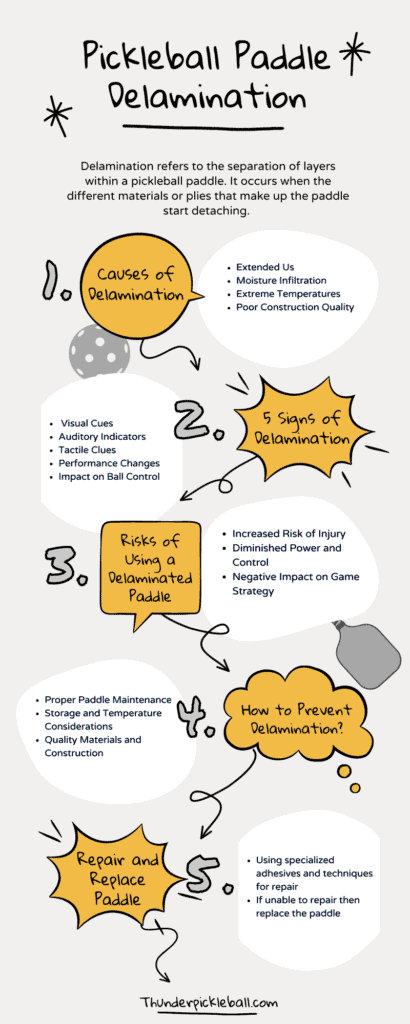
How to tell if pickleball paddle is delaminated?
To check if a pickleball paddle is delaminated, look for any visible signs of separation or bubbling between the layers of the paddle’s surface. Run your fingers along the edges and surface, feeling for any irregularities or soft spots. A delaminated paddle may produce a hollow sound when tapped. If you notice these issues, it’s advisable to replace the paddle for optimal performance and safety.
FAQs about Delaminated Pickleball Paddles
Is delamination covered under warranty?
This depends on the manufacturer. Some brands offer warranties that cover defects, including delamination, for a certain period. It’s advisable to check the warranty details when purchasing a paddle.
How long does a typical pickleball paddle last before delamination might occur?
The lifespan of a pickleball paddle varies depending on usage, care, and quality. On average, a well-maintained paddle can last 1-2 years, but high-quality paddles with proper care can last longer.
Can delamination occur suddenly, or is it a gradual process?
Delamination can be both gradual and sudden. Continuous use and exposure to damaging conditions usually cause a gradual separation. However, a strong impact or extreme temperature change can cause sudden delamination.
Keep an eye out for early signs—nobody wants a paddle that sounds like a maraca!
Regular inspections and some TLC go a long way. Plus, investing in high-quality paddles means less time worrying about cracks and more time dominating the court!
And if it does happen, don’t panic! Just assess the damage, and decide if it’s time for a quick fix or a shiny new replacement. Your game deserves the best!
Remember, a happy paddle means a happy player! Say Hello to me.
Learn: Are Hoka Shoes Good For Pickleball?, Top Female Pickleball Players , Top Men’s Pickleball Players
Equipment: Best pickleball paddles under $100, Where to Rent Pickleball

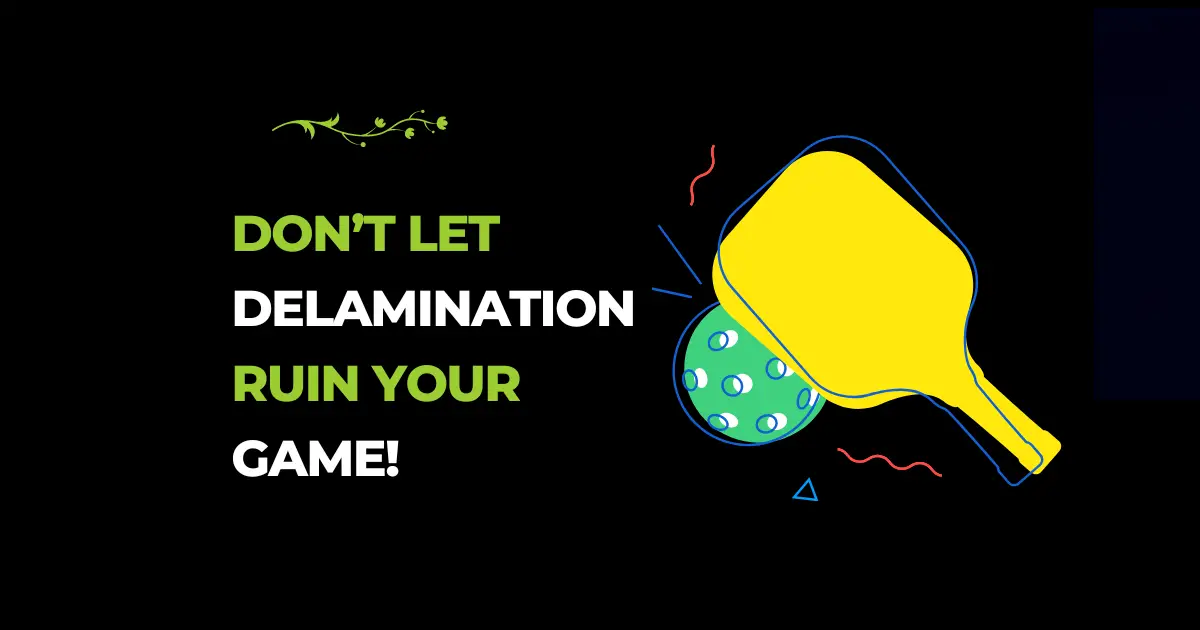
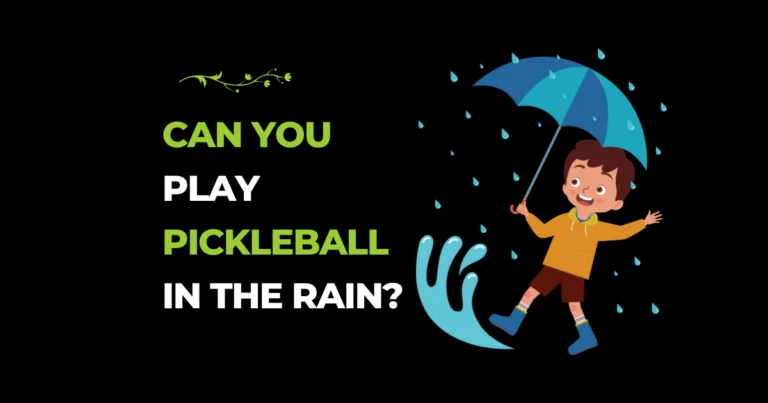
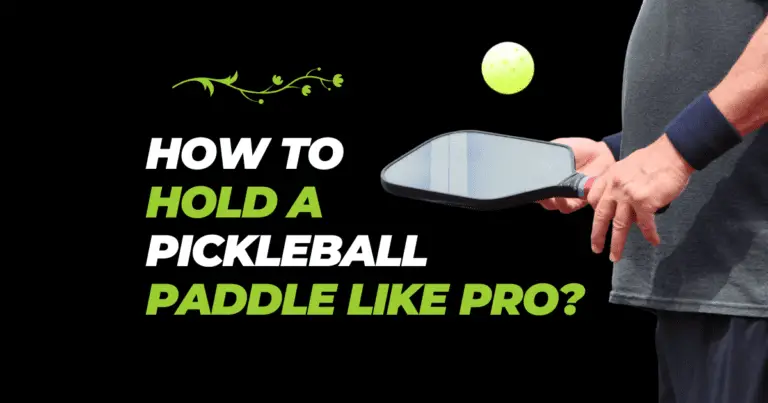
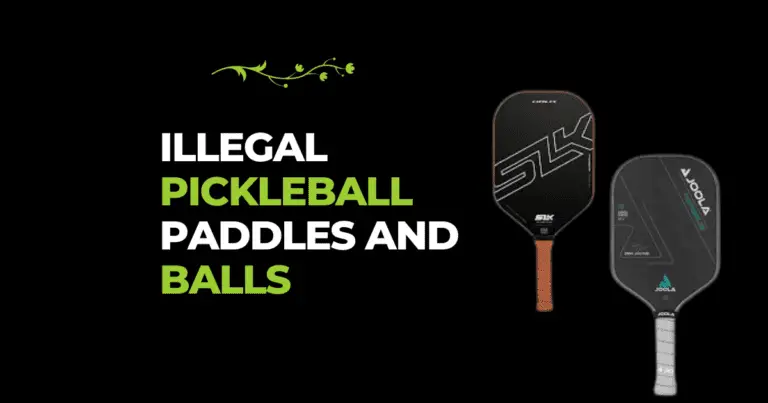
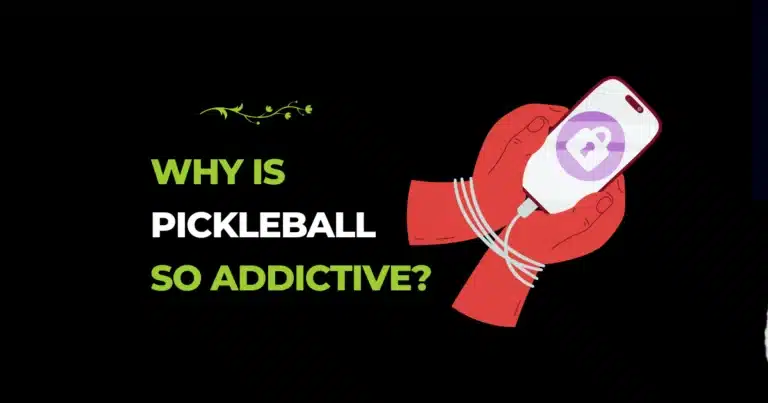

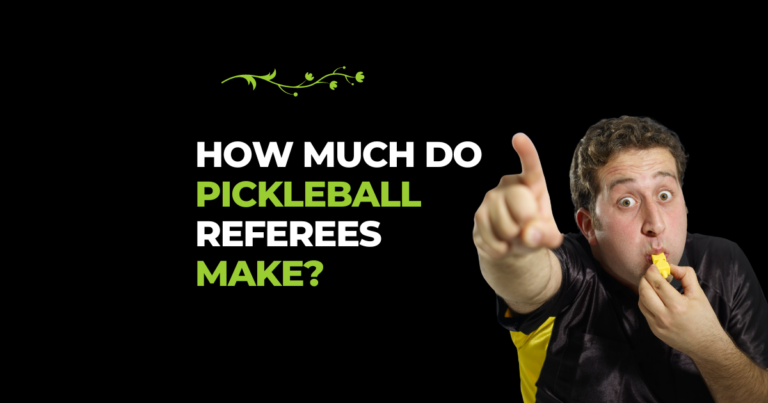
One Comment